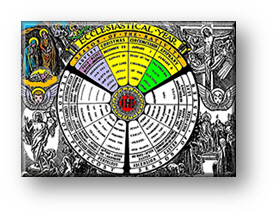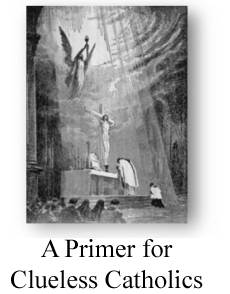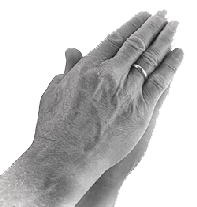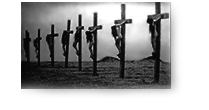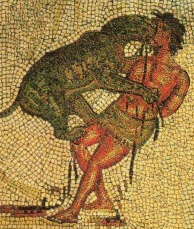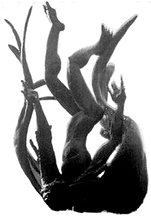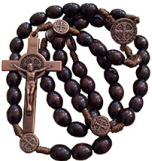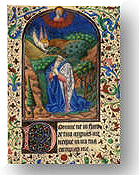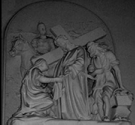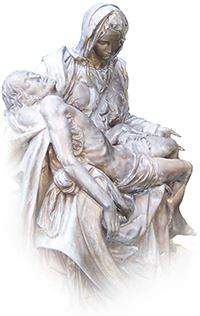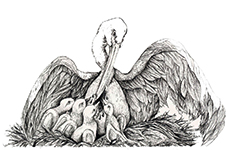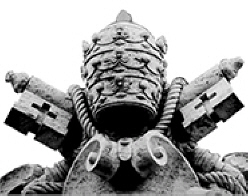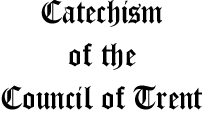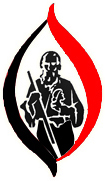|
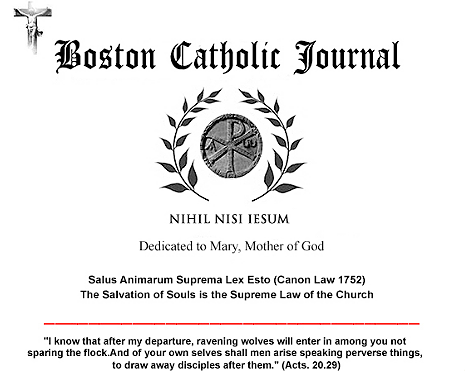
The
Tortures and Torments
of the Christian Martyrs
from
De SS. Martyrum Cruciatibus
(a
Modern Edition)
Chapter IX
Of other Instruments of Torture and Methods Used for the Tormenting
of the Christian Martyrs:
-
Schoolboys’
Iron Styluses
-
Nails
-
Saws
-
Spears
-
Swords
-
Arrows
-
Tearing
out the Inwards
-
Cutting
the Throat
-
Beheading
-
Branding
and Marking
-
Pounding with Axes and Clubs
Ever
seeking to prey upon of the souls
of men, the Devil never ceases to devise further means and methods by
which he may utterly overthrow and drive out the Faith of Christ. Deeming
that he had found a means of easily accomplishing his evil purpose through
torturing Christ’s members, he caused all the great judges of those
times to believe that this alone would make them renowned — if
they ordered men and women who were champions and heralds of our Religion
to be cruelly tortured, tormented and put to death with every agony
that could possibly be devised. Such shallow ingenuity! Such futile
designs! Truly, were these wise men made foolish, their cunning devices
and evil counsels availing them nothing!
For indeed,— as Eusebius
says in his Ecclesiastical History —
“The hands of the
executioners failed, and although succeeding one another in relays,
the men were wearied out, and the edge of their sword blunted. I
myself saw the tormentors sit back exhausted, recover strength,
regain breath, take fresh swords — and yet the day was not long
enough for all the torments to be inflicted! Nevertheless, not one
of all the band, not so much as one child of tender years, could
be frightened back from confronting death; the one and only thing
each dreaded was, that when the hurrying sun ended the short day,
he should be left behind, separated from the society of his martyred
comrades. Thus did they, one and all, steadfastly and boldly trusting
to the Faith, welcome with joy and exultation a present death as
the beginning of eternal life. In a word, while the first batches
were being slaughtered, the rest would stand singing psalms and
hymns to God, each waiting his own turn of martyrdom, that so they
might breathe forth their last breath in praises to the Almighty.”
How miserable the failure
of these servants of Satan, and how great their foolishness! They themselves
tumbled into the pit that they had dug for the Saints to fall into!
Again and again they condemned — all in vain — their Christian adversaries
to be torn limb from limb, to be stabbed to death with countless blows
of iron writing Styluses or, what is the same thing, schoolboys’ pens,
to be pierced over with nails, either their body entire or some special
part of it, to be cut in half with saws, to be transfixed with spears,
to be pierced with swords, to be shot with arrows; their stomachs to
be gashed open and their inwards torn out, their throats to be cut;
to be beheaded, to be disfigured with brands and markings; their heads
to be pounded with axes or clubs, and dashed to pieces; women’s bosoms
to be amputated, and their tongues, hands, and feet, as well as men’s,
to be cut away; their legs to be broken, their teeth pulled out, their
skin cruelly flayed from their living bodies, their bodies impaled with
a sharp stake; nails, eyes, and face to be tortured with keen-pointed
reeds; to be hurled headlong from high places, to be dragged over ground
strewn with thorns and thistles and thickly covered with sharp stones
by untamed horses or in other ways, to be exposed to wild beasts, to
be buried alive in the earth, to be cast into a running river, thrown
into a limekiln, stripped naked and led through the public streets.
Or, whenever two trees could be found growing near each other, a branch
of each being bent down so as to meet, to either of these one of the
martyr’s feet was tied in such a way that the boughs which had been
forcibly drawn together, when released, returned with a bound to their
natural position and, tearing the man’s body in two which was fastened
to them, rent his limbs apart and bore them back with them. Or lastly,
these idol worshippers would drive Christians into exile, utterly deprived
of every comfort, or sent forth to the quarries to cut blocks of marble,
dig sand and carry the same on their own shoulders to their edifices
which were then being built, or else to be deported to the mines. With
such torments, and others described in previous chapters — and
others still, the names for which, given their unspeakable cruelty,
Eusebius confesses himself incapable of describing — with all these
were Christ’s most blessed soldiers tortured. Yet could they never be
vanquished by any of them; but guarded by the protection of Heaven,
they suffered and endured every anguish bravely and steadfastly. The
following is told by St. Ephraem:
“For truly they stood
forth in the time of trial most gallant warriors of God, bearing
every torment with the utmost readiness in the name of the only-begotten
Son of God, our Savior Jesus Christ. How strong were they and what
a glory of gallant endurance they acquired, who, seeing all the
horrid preparations of torture then before their eyes, not only
felt no fear, but contending with all the greater constancy, overcame
all suffering by their steadfastness! They looked on the blazing
pile, and red-hot pans, and boiling caldrons, which in their fierce
boiling shot out afar drops of pitch and melted fat. They gazed
upon the wheels, iron-shod and iron-spiked, turning with fierce
velocity amid the flames. They beheld the iron claws and glowing
plates, the cudgels, the bears and lions, precipices, handspikes,
augers, fetters and chains, in a word all the devices the Arch-Enemy
of Truth invented against the holy confessors of our Lord and Savior.
For every sort of torment was spread by the evil one in sight of
the martyrs to make the Saints afraid, that their tongues, struck
dumb by the mere sight of such horrors, may not dare to confess
the Lord Jesus. But what effect on these faithful and eager warriors
of Christ had this exhibition of horrible and unheard of tortures?
It served to make them more eager yet, with greater confidence and
increased firmness still, unhesitatingly and intrepidly to confess
their Savior Christ before the tribunals of Judges and Administrators!
Neither crackling flames, nor fiery pans, nor boiling pots, nor
hurtling wheels, nor red-hot plates, nor toothed claws and other
the like instruments, nor fetters and ponderous chains, nor tyrants’
menaces, nor princes’ threats, nor all the Devil’s and his servants’
wiles, availed to terrify Christ’s intrepid soldiers, or force them
to abjure their faith or withdraw their allegiance to their God
and Savior. Rather, imbued with faith, they trod underfoot all the
machinations of the Evil One, and consternation had no hold upon
them.”
“Could you but see the strength of Christ’s faithful followers,
see the glory of the soldiers of the Savior, and their steadfastness!
Could you but glimpse the haste of them that seek the kingdom of
Heaven with all their heart, and love Christ their King with all
their might! Could you but observe the perfect faith of them that
have been truly made perfect! Could you see the charity that burns
in the holy bosoms of martyrs, for which they scorned all earthly
joys, to hold to their God whom they have chosen? Could you but
witness Christ’s loving-kindness, by which He raised to Heaven itself
those who desire nothing more than to be brought there! Could you
only see that triumphant Paradise embrace and cherish Christ’s champions
which were eager for its bliss, now rejoicing in eternal light and
peace! Consider then, and contemplate, the glorious triumphs
of the martyrs; behold with the eyes of the heart the abounding
faith of these heavenly souls, and the inviolable ardor of their
piety! No weight of agony could move these just men’s resolution;
not even death itself could extinguish the zeal of their undaunted
love. Beaten, they welcomed with great joy the blows of the rods
as the keenest of delights; with calm and smiling faces they rendered
thanks to God, that they had been deemed worthy to suffer for His
sake.” [see the Acts of the Apostles 5.41]
Let us now continue to
examine each of the several sorts of tortures listed at the beginning
of this chapter to the end of confirming their authenticity through
the Histories of the Blessed Martyrs. The first — martyrs
torn limb from limb — is attested to in the Acts of St.
Nicephorus, commemorated in the Roman Martyrology on February
25th, and of St. James, surnamed Intercisus (“cut in pieces”);
the second by St. Gregory Nazianzen, Victor, On the Vandal Persecution,
as likewise the History of the martyrdom of St. Cassianus.
Iron Writing Styluses or Boys’ Pens — what they are and to
what Purposes they were turned
This was an instrument,
sometimes of brass, used for writing upon white waxed tablets in antiquity,
much as we write nowadays in books. We find this as far back as in chapter
19 of the Book of Job:
“Oh that my words
were now written! Oh, that they were inscribed in a book! that with
an iron pen and lead they were graven. ...”
Likewise Plautus says,
in his Bacchides:
... Affer cito.
Quid? Stylum, ceram, tabellas et linum
Habes tabellas? Vis rogare?
Habeo stylum
(“... Bring quickly. What? Your style, wax, tablets and thread,”
(i.e. the thread with which the tablets were tied together when
sent as a letter) —“ Have you your tablets? Can you ask? I have
my stylus.”)
It is precisely with these
writing instruments, or Styluses, that those condemned to die were often
painfully stabbed to death. This is attested to by many authors, among
them, Suetonius, in his Life of the Emperor Caius, as follows:
“Wishing the Senator’s
destruction, he suborned men to attack him as he left the Senate
House, and suddenly railing against him as a public enemy, to stab
him with their writing pens and pass him on to others to be yet
further mangled.”
Also Seneca tells us that:
“Erixio, a Roman Knight,
was within our own memory stabbed to death by the populace in the
Forum with their writing pens, because he had killed his son by
flogging.”
This is also seen in the
Acts of St. Mark of Arethusa, where we read:
“From one crowd of
boys to another Mark was tossed, swinging to and fro, as they
caught that noble body on their sharp pens or styluses;”
Also the Acts of
St. Cassian the Martyr we find:
“Hereupon the holy
man was questioned by the persecutor ... and then stripped of his
clothes, and with hands tied behind him, he was made to stand up
while his students were called in and given permission to
kill him — so they proceeded to batter him with their tablets,
or to to stab him with their writing Styluses. In this scene of
martyrdom the weaker the hands engaged, the heavier was the pain
of the victim, since death was the more protracted.”
It is important to make
a distinction between being tormented with goads and to be stabbed
with iron Styluses. With the former offenders were merely tortured,
but with the latter they were both tortured and put to death. The former,
moreover, known as goading, was principally used upon slaves that
had been guilty of stealing, while the latter was inflicted on prisoners
convicted of the gravest crimes. The former mode of punishment is spoken
of by Prudentius in his Hymn of the Martyr St. Hippolytus:
Ilaque infestis
perfodiunt stimulis
(“And they stab his sides with painful goads”);
We find it no less used,
and repeatedly, by Plautus, as for instance in the Asinaria:
Utinam nunc mihi
stimulus in manu sit,
(“Would I had my goad in my hand this minute”)
and in his Menoechmi:
At ego te pendentem
fodiam stimulis triginta dies
(“But I will hang you up and dig you with the goads for
thirty days”);
To this may further be
added a line from the same play of the Menoechmi in the way of
further illustration:
Jam ascendo in
currum. Jam lora teneo, jam stimulus in manu est
(“Now I mount the chariot, now I grasp the reins, now the goad
is in my hands”).
All these passages serve
to show that the goad was a rod or reed with a sharp point such
as rustics use to prod oxen, and this is confirmed by the Acts
of St. Joseph the Martyr, where we find written:
“But tying a point
to a long reed, they ordered the Saint to be pricked therewith.”
To come now to the third
and fourth kinds of torture, in which the Holy Martyrs were pierced
with nails or cut in two with iron saws.
The first kind of torture,
involving the use of nails, we find in the Acts
of Saints Paphnutius (Roman Martyrology, September 24), and Severus,
Bishop (Roman Martyrology, November 7), Saints Fausta and Euphemia,
virgins and martyrs, and others.
The second of these
punishments — that of sawing in half —
is recorded by Suetonius’s, in his Life of the Emperor Caius,
where he speaks of certain persons condemned to this type of death.
We will examine this form of torture in greater detail later, a torture
which had the effect of stamping the name of the Emperor Caligula (Caius)
with a reputation of cruelty for all ages. All this should impress upon
us a clearer understanding, a deeper grasp, of the utter ferocity and
rage of the Heathen against Christ’s soldiers, and how steadfast on
the other hand the constancy and valor of Christian men and women, through
which they endured, often happily, even eagerly, suffering and torment
of every description.
The fifth kind of torture, in which Christians were pierced
with nails, augers, or gimlets, can be found in the
Acts of the holy Virgins and Martyred Saints, Faith, Hope, and Charity,
three sisters already spoken of earlier, and also in the account of
St. Fausta, a virgin martyr commemorated in the Roman Marlyrology,
on September 20th:
“At Cyzicus in the
Propontis, anniversary of the Blessed Martyrs, Fausta, a virgin,
and Eulasius, slain under the Emperor Maximian. Of these two, Fausta
was made bald by this same Eulasius, who was priest of the idols,
and her head shaven in scorn, then hung up and tortured. Finally
when the executioners were ordered to cut her in two, despite their
efforts, they could not. Eulasius, witnessing this, was astounded
and then believed in Christ. As a consequence, while he in his turn
was being violently tortured by the Emperor’s orders, Fausta was
pierced with an auger in the head, stuck all over with nails, and
finally set in a frying-pan over the fire, and so with the other,
summoned by a voice from heaven, ascended to the Lord.”
The sixth kind,
by which Christians were transfixed with spears or
swords, is illustrated in the first instance (by spears) in
Histories of Saints Marcus and Marcellianus, Saints Benignus
and Cyril, and in the latter instance (by swords) a deacon, Saints Fusca,
Basilia, Anatholia and Justina, virgins and martyrs, and St. Polycarp.
Moving on to the seventh method of torture, the tearing open of
the sufferers’ abdomen, we find one example of this in the
History of St. Cyril, whose martyrdom is recorded in the Roman
Martyrology on March 26th in these words:
“At Heliopolis in
the Lebanon region, anniversary of St. Cyril, deacon and martyr,
whose belly was cut open and his liver torn out, which the Heathen
then proceeded to eat. This was done under the Emperor Julian, the
Apostate.”
Another is found in the
Acts of St. Eucratis or Eugratia, virgin and martyr, inscribed
in the Martyrology on April 16th:
“At Caesaraugusta
(Saragossa) in Spain, anniversary of Saint Eucratis, virgin and
martyr, who after her body had been mangled, her breast cut off,
and her liver torn out, was shut up still alive in jail until her
body rotted away and began to decompose.”
Of
Other Torments and Tortures to which Christian Virgins were Subjected
It was first under the
rule of the Emperor Julian, surnamed the Apostate, that holy virgins
were torn open. Then, even while their bellies were yet quivering and
heaving, they were stuffed with barley and exposed to be devoured by
wild hogs. This is recorded in each and every detail by St. Gregory
Nazianzen, who writes:
“For they (the men
of Heliopolis) — to relate only one atrocity out of many, but one
that may well rouse the horror even of godless Heathens — are said
to have taken chaste virgins, superior to the world’s attractions
and who had scarcely ever yet so much as had been seen by men, and
setting them in a public place, stripped them naked, that they might
first shame them by exposing them to the general gaze. Afterward
tearing and cutting open their bellies (Oh, Christ! how imitate
Thy patient long-suffering at that time?), they first chewed
their flesh with their own teeth and swallowed it — and in
their abominable fury, gorged themselves on their raw livers, and
having once tasted such food, made it their common and usual diet;
and then, while their inwards were yet quivering, they stuffed in
pigs’ food, and letting in wild hogs, offered the horrid spectacle
for people to see — the girls’ flesh being mangled and eaten
together with the barley. ...”
All this shows us that
these Christian virgins were treated in this horrible way to subject
them to the greatest ignominy possible — the same reason for which they
were stripped of their clothes, for no greater shame can be inflicted
on maidens than to be seen naked by lustful and wanton eyes.
Shame of this sort was inflicted on those Holy Virgins of Christ, Saints
Prisca, Agnes, Barbara, Christina, Euphemia of Aquileia and her three
sisters, Dorothy, Thecla, and Erasma, and on many, many, other Christian
women. But there were also other ways used to expose the holy virgins
to shame: their hair, for example, was often shaved off, as we find
in the Histories of the blessed Saints Fausta, Charitina, Christina,
and other virgin martyrs. In order to adequately understand how shameful
it was to women to have had their heads shaved, it is necessary to read
the Acts of the Saints just mentioned, Suetonius’ Life of
Caius Caligula, and most especially what is written in the Roman
Martyrology concerning St. Fausta, who was humiliated in this way.
What is more, to bring
Christian maidens to the greatest shame and violence, and to graphically
insult our holy Faith, these virgins were given over to sexual panderers
or to wanton youths, or were taken to public brothels to have their
maidenhood violated there. Yet did they remain virgins withal before
God, and even having been violated offered to Him an unstained sacrifice.
The motivation for these these atrocities perpetrated on virgins dedicated
to Christ, lay simply (all prurience aside) in the way of insult and
disdain for the Christian religion. It is also likely that another motive
was involved: the long-established custom of the Romans (as Suetonius
tells us in his Life of Tiberius) that held it to be unlawful
for a virgin to be violently put to death, unless she had first been
deflowered by her executioners or by whore-mongers. I will quote the
Historian’s actual words, in this regard:
“Unripe girls, inasmuch
as by established custom it was forbidden to strangle virgins, were
first violated by the hangman and then executed.”
However, the goodness
and the power of Christ is such that He safeguards His brides even when
they are exposed to peril and danger and preserves their virtue intact,
reserving and liberating them from the hands of insolent and unruly
men. This is what Basil the Great says in his book On True Virginity:
“When the fierceness
of persecution was at its height, the virgins who were chosen out
for their faithful love of the Bridegroom and delivered up to the
mockery of impious men, remained unsullied in their bodies, forasmuch
as He for Whose sake they bore these things rendered vain the assaults
of sinners upon their flesh, and kept their bodies unsoiled by the
miracle of His divine power.”
The same violence and
the same deliverance is attested to in the Acts of the Blessed
Saints and Virgins, Agnes, Daria, Seraphia, Theodora, Lucy, Susanna,
and many others.
Under the Emperors Constantius (son of Constantine the Great) and Valens,
as well as during the savage persecution of Catholics by the Vandals,
the holy and virgin Brides of Christ were subjected to the same cruelty,
the same shame, the same ignominy. Of such abominations under Constantius
we are told by St. Athanasius (Apology) the following:
“Now virgins
were set in the flames of a blazing pile by that most abandoned
of mankind Sebastianus, leader of the troops, to force them to assent
to the heretical Arian doctrine. But when he found them steadfast
against this torture, he stripped them naked and beat them so fiercely
on the face, that for a long time after their friends could scarcely
recognize them.”
and in another place,
“The Arians whip and
scourge the sacred bodies of virgins, and putting rude hands beneath
their clothes drag them along, and bare their heads — and
when they resisted and would not come, punched and kicked them.
However cruel this treatment, more cruelties yet followed — treatment
altogether intolerable because of its shameful indecency. For knowing
the maidens’ susceptibility to shame and their utter innocence of
evil words — that they could more readily endure stoning and
cudgeling than foul speeches — these men would accompany their
violence with the most abominable expressions, and encourage the
younger men who were prone to crude laughter to abuse them with
similar language. But the holy virgins and other pure-minded women
would recoil from such talk as from the bite of serpents. And so
these men added to the perpetration of these horrors through their
filthy utterances.”
and yet again further
on,
“Many virgins who,
rebuking others for this type of impiety and daring to speak up
for the truth, were driven from their houses; others they insulted
as they went about their business, had them stripped by wanton and
disorderly youths, and gave their own women permission to treat
them with whatever indignities they would.”
Similar indignities were
shown to holy virgins under the same Emperor (Constantius) according
to the historian Theodoretus:
“George the Arian
compelled virgins which had vowed themselves to lifelong chastity
not only to deny the confession of St. Athanasius, but to pronounce
accursed the faith of their fathers. His associate and confederate
in these cruelties was a certain Sebastian, Prefect of the Troops,
who, kindling a pyre in the middle of the city, made the virgins
to stand naked beside it, bidding them to abjure their religion.
But being so set in the Faith — a sad and a bitter sight for
believers and unbelievers alike — they yet held this ignominy
as the greatest honor.”
Of virgins similarly mocked
and scorned under the Emperor Valens, Peter of Alexander writes, (quoted
in the History, of Theodoretus):
“Palladius and his
forces entered the Catholics’ Church, and instead of solemn words
befitting the holy place, began to sing burlesque litanies to the
holy images; instead of reading the divine Scriptures, they uttered
unseemly shouts. They did not hesitate to indulge in dissolute words
and obscene language and to pour insults upon the virgins of Christ
... nor did they remain content with foul words, sinning only in
them, but far surpassed the abomination of their language by the
atrocity of their deeds!
These men, vessels
of wrath doomed to destruction, continued making loud and wanton
noises that burst from their great noses like water, so to speak,
from an aqueduct — and began to tear the dresses of Christ’s
virgins, whose holy life made them an example to godly people, and
led them about naked as they were born in triumph up and down the
city, and in their wantonness mocked them insolently and indecently,
perpetrating deeds that were at once cruel and barbarous. And if
anyone was moved to pity and tried either to stay them by force
or dissuade them by words from such abominations, they did not escape
without wounds.
Alas! Many maidens
were forcibly violated, and many struck over the head with clubs,
were left lying speechless. Nor was it permitted to commit their
bodies to the tomb; indeed in many cases these women were sought
for in vain by their parents with much weeping, but never found.”
Lastly, concerning virgins
who were wantonly and violently handled under the Arian Vandals to the
contempt of the true Church of Christ, Victor, Bishop of Utica, also
bears witness:
“Then the Tyrant ordered
the consecrated virgins to be assembled together, urging the Vandals,
with midwives of their own race, to inspect and scrutinize, contrary
to the laws of modesty, the shamefaced secrets of their privy parts,
when neither their mothers were present nor any of the matrons.
Then hanging the girls up cruelly, and cruelly burning them, fastening
great weights to their feet, they afterward applied red-hot plates
of iron to back, belly, breasts, and sides. Moreover they were asked
in the intervals of torture, ‘Tell us now how the Bishops lie with
you, and your Priests.’ And by this cruelty of torment we know that
very many were killed there and then, while the others who were
left alive were crippled and bent double by the drying up and contraction
of the skin.”
All this plainly shows
us that the Heretics of former days (whose evil example more
recent Heretics still follow) proved themselves, in venting their hatred
of the Catholic religion on the holy virgins, without a doubt more inhuman,
more wanton, more merciless, and more cruel than the Heathen.
We will now explore the eighth kind of torture among those
named at the beginning of this chapter. This torment, the shooting
of Christians with arrows, is attested to by the Histories
of many martyrs, particularly of the two hundred and sixty, whose names
are unknown to us, but who are recorded in the Roman Martyrology
on March 1st, as having died in this manner; also of St. Martha and
her sons, Saints Irenis and Christina, virgins and martyrs, Saints Sebastian,
Christopher and Faustus, of whom record is given in the Greek Menology,
on July 16th, in the following words:
“Same day, anniversary
of the Blessed Martyr, St. Faustus, who under the Emperor Decius,
by reason of his confession of the Christian Faith, was arrested,
and freely professing himself a servant of Christ, was fixed to
a cross and wounded with arrows. After remaining five entire days
on the cross without flinching, he at last commended his spirit
into the hands of God. Again many Catholics are recorded by Victor
in his Vandal Persecution to have been shot to death
by arrows.
He writes, “On one
occasion the Eastertide rites were being celebrated, and our people
having met in a place called the Palace to honor Easter Day, and
shut and locked the Church upon themselves, the Arians discovered
this. Immediately one of the priests, Andiot by name, collecting
together a band of armed men, started to attack the company of innocent
worshippers. They rushed up with drawn swords, seized other arms,
and some of them, climbing on to the roofs, shot showers of arrows
through the windows of the Church. Just then, as it happened, God’s
people were singing, and a reader was standing up in the ambo
intoning the Allelujah versicle. At that moment an arrow caught
him in the throat, and the book falling from his hand, he, too,
fell down dead. Many others likewise are known to have been killed
by arrows and darts in the very middle of the platform of the Altar.
...”
The ninth mode of
torture — that wherein the martyrs’ throats were cut
— is found in the History of St. Philip and his daughter
St. Eugenia, a Roman virgin and martyr, and also in the account of the
death of Saints Justus and Pastor, two brothers, given in the Roman
Martyrology on August 13th:
“In Spain, anniversary
of the Blessed Martyrs, Saints Justus and Pastor, brothers. When
already well advanced in letters, they threw down their writing-tablets
in the school, and of their own free impulse ran forth to meet martyrdom.
Soon they were ordered by Dacian, the Governor of the Province,
to be arrested and beaten with clubs; and after gallantly strengthening
one another’s constancy with mutual appeals, were led forth from
the city, and their throats were cut by the public executioner.”
Of the tenth
sort, through which martyrs were condemned to be beheaded,
witness is afforded by countless Histories of the Blessed Martyrs
— notably of Saints Terence, Pompey, and their companions, Saints Palmatius,
a Consul, and Simplicius, a Senator and their companions, Saints Anastasia
and Basilissa, virgins and martyrs, Saints John and Paul, brothers,
and many others. This is also attested to again and again in the Acts
of the Blessed Virgins who were martyred at Rome — such as Saints Martina,
Tatiana, Prisca, Theoodora, Cantianilla and her brothers, Lucy, Flora,
Susanna, and a great many others.
It is highly probable that the greater part of the Christian martyrs
were generally beheaded with the sword rather than the axe. This may
be gathered not only from the several Histories of the Saints
in manuscript, but also from other accounts in which we read that Christ’s
warriors were chastised, slain, struck, punished, and so on, with
the sword, but also from the fact that it was considered more ignominious
to be slain with the sword than with the axe. Thus Spartian, in his
Life of Geta, declares how Caracalla was angered because Papinian,
the famous Jurist, whom he had ordered to be put to death, was beheaded
with an axe and not, a sword. We say the martyrs “were generally
beheaded with the sword,” for it is equally clear from the writers of
Ecclesiastical History that some were put to death by the axe as well.
The
Method by which the Christian Martyrs were Beheaded
Most generally the Blessed
Martyrs were decapitated kneeling on their knees with the body bending
forward. We find this, once again, in the Histories of the Saints,
especially the account of St. Paul the Apostle as it comes to us through
Linus, St. Menna, St. Dionysius (St. Denis), St. Flavian, and several
others. Here we read:
“Binding his eyes
with Plautilla’s handkerchief, Paul set both knees to the ground
and stretched out his neck. The soldier, lifting his arms aloft,
struck him with all his strength and cut off his head.”
In the Acts of
St. Menna we find, correspondingly, the following:
“When he had so said,
he knelt down and stretched out his neck, and was instantly beheaded
with a sword”
We also find this in the
respective Acts of Saints Dionysius, Rusticus, and Eleutherius, where
we read:
“Forasmuch therefore
as the Blessed Martyrs had, to begin with, been stripped and beaten
with rods in sight of all, they were now clad again in their garments
and led away to the place fixed for their beheading, and there ordered
to fall on their knees ...;”
And further on:
“Kneeling and with
out-stretched necks, at one and the same instant, according to the
Prince’s order, they were beheaded with axes.”
And still further on:
“An ineffable light
shone round about them all, and the dead body of St. Dionysius sprang
upright, and taking in his hand the holy head from the corpse ...
.”
Lastly, in the account
of the passion of St. Flavian, it is recorded how:
“When the speech was
finished, the victim went down to the appointed place, and bound
his eyes with the part of the chaplet which Mutanus had asked him
to keep two days before, and then kneeling down as though in prayer,
he ended his martyrdom and his prayers at one and the same moment.”
Martyrdom though beheading
with the sword, was often preceded with torture, and accomplished in
several ways. Thus Valerius Maximus (not to mention other authors) declares
that persons to be beheaded were usually first tied to stakes:
“He ordered them to
be beaten with rods, then tied to a stake and beheaded with an axe.”
But we also read that
St. Stephen, the Pope, was decapitated seated in his chair, while another
Christian martyr, St. Alexander, was beheaded standing up. Of the latter
we find the following recorded:
“When he had thus
addressed the crowds that were assembled, Alexander turned to the
executioner and said, ’Stay a little, brother, that I may make another
prayer to God.’ Then, falling on his knees, he prayed ... Upon hearing
a voice, the holy Martyr rose up from the ground, and addressing
the soldiers, cried, ’Quick, my brothers, do your duty.’ ... And
when he had so said, Caelestinus drew his sword, and taking a linen
cloth, bound the blessed Alexander’s eyes.”
From these passages we
gather that those to be beheaded with the sword were often first scourged
with rods, and then afterward their eyes covered over and veiled with
linen cloths or handkerchiefs just prior to being beheaded.
Even now the Heretics of our own day (1591) have condemned Catholics
to death by beheading, among whom (see Sanders’ Anglican Schism)
we find especially two shining lights of England, to wit: [St.] John
Fisher, Bishop of Rochester, and a member of the Most Sacred College
of Cardinals, and [St.] Sir Thomas More, a knight and Chancellor of
the entire Kingdom.
Now of the eleventh and twelfth methods of torture named
above, by which the Blessed Martyrs were branded with
disfiguring marks, or had their heads beaten with an axe or with
clubs, we find examples in the Histories of Saints Bibiana
and Aurea, Roman virgins and martyrs, and of Saints Laurence, Eutropius,
Getulius, and others.
This last form of punishment, which was especially hideous, inasmuch
as a free citizen’s face was terribly disfigured by it, mentioned by
Suetonius in his Life of Caius:
“Many men of honorable
rank he first disfigured with marks of branding, and then condemned
to the mines and to work on the roads, or to wild beasts.“”
And again Seneca:
“There are various
sorts of bonds, and different kinds of punishments — mangling of
the limbs, branding of the brow ...”
This methodical disfigurement
of the face, by which the offenders’ brows were marked with deeply incised
characters that could never be obliterated, was forbidden by the Emperor
Constantine — but restored again under the Heretic and Iconoclast
Emperor Theophilus. For it was Theophilus who branded the faces of the
two Sainted brothers, Theophanes and Theodorus. And here let us quote,
for the greater glory of God and the pious profit of the faithful, what
Metaphrastes has preserved concerning these two martyrs from their letter
addressed to the Bishop of Cyzicus and the rest of the multitude of
Catholic believers,
“So when we stood
before the Emperor’s face, silent and with downcast eyes, the Prince
turning to the Prefect, which stood beside him, spoke to us in an
angry and rough voice filled with contempt, and with a menacing
face he said, ’Take these men away, and inscribe and engrave on
their faces the verses composed for this purpose, and deliver them
over to two Saracens, that they may carry them away to their own
country’“ and further on, [We responded] “For it would be easier
for heaven and earth to be turned upside down, than to seduce us
from our religion. He then commanded our faces to be engraved; and
still filled with pain from the fiery lashes we had received from
the scourges, we were stretched on benches, and our faces stamped
with words. And they went on pricking and pricking till darkness
came on, when the sun set. ... Truly, we shall be known of Christ
by these signs, and these letters shall be known and read of the
heavenly hosts. For the Lord Himself said,
‘Whatsoever
ye have done unto the least of these, ye have done unto Me.’
”
CHAPTER X
Chapters:
1 -
2 -
3 -
4 -
5 -
6 -
7 -
8 -
9 -
10 -
11 -
12

Totally Faithful to the Sacred
Deposit of Faith entrusted to the Holy See in Rome
“Scio
opera tua ... quia modicum habes virtutem, et servasti verbum
Meum, nec non negasti Nomen Meum”
“I
know your works ... that you have but little power, and
yet you have kept My word, and have not denied My Name.”
(Apocalypse
3.8)
Copyright © 2005
- 2024 Boston Catholic Journal. All rights reserved. Unless
otherwise stated, permission is granted by the Boston Catholic
Journal for the copying and distribution of the articles
and audio files under the following conditions: No
additions, deletions, or changes are to be made to the text
or audio files in any way, and the copies may not be sold
for a profit. In the reproduction, in any format of any
image, graphic, text, or audio file, attribution must be
given to the Boston Catholic Journal.
|
|

